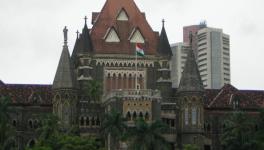BJP Must Choose: Either Sanatan Dharma or Constitution

The Dwija leaders of the Bharatiya Janata Party, speaking from their ruling position in Delhi, are trying to mislead the nation about sanatan dharma and its “inclusiveness”. Moving away from their usual Hindutva or Hindu religious rhetoric, they have put forward the notion of sanatan dharma. Though they started this by opposing DMK minister Udayanidhi Stalin’s statement about “eradicating sanatan dharma”, it is the primary internal ideological agenda of the Rashtriya Swayamsevak Sangh (RSS), the progenitor of the BJP, to push the Shudra-backward castes and Dalit-Adivasi forces to their pre-constitutional status.
The RSS and BJP seem to have concluded that the Muslims and Christians have already been pushed into a shell during their ten years in power at the Centre and in several states. Their ultimate agenda, especially of the classical Dwijas who operate through the RSS, seems to be that the backward castes and Adivasis must now be pushed back to their classical enslaved and semi-enslaved status.
Whether it is possible or not is a different issue—their drive is crystal clear.
How BJP Defines sanatan dharma
While attacking Udayanidhi in a press conference, Ravi Shankar Prasad, a senior BJP spokesperson, defined sanatan dharma as “eternal law”. But what is this eternal law? Prasad did not elaborate. Is it an eternal natural law or an eternal spiritual law? This, too, nobody knows. Per the Vedic rules, Sanatan only means traditional or old religious practice.
As we know the RSS-BJP understanding of it, sanatan dharma has three characteristics:
1) Maintaining the caste order without allowing the Shudras, Dalits or Adivasis liberation from bondage;
2) Performing yagnas and consuming ritual food after animal sacrifice;
3) The top two Dwija castes—Brahmins and Kshatriyas—are never supposed to work in the productive fields and should make the Shudras do those jobs in perpetuity.
Therefore, sanatan dharma defines the eternal duties of the Sanatans, Shudras, Dalits and Adivasis.
Revolts Against Sanatan Dharma
The first revolt against such an order came from Vardhamana Mahavira, the last of the 24 Tirthankars and founder of Jainism. Jainism turned to complete vegetarianism around the 7th century BCE as a response to the large-scale Vedic sacrifices (yajna) in which animals were killed. It allowed members of any caste to join the Jain sect as equals, and opposed the killing of any life form as violence.
Union Home Minister Amit Shah, a Jain, now supports sanatan dharma—which Jainism has opposed since the ancient period.
The second revolt came from Gautama Buddha. This was well-formulated with many of the earliest humanitarian principles. Buddhism opposed the caste system and supported the sramana philosophy as natural to all human beings. For them, working on farms or grazing animals was as dignified as preaching the Vedas.
Buddhism opposed animal sacrifices and proposed a balanced food culture of meat and non-meat (or vegetarian, as it is now known) as the everyday foods for humans. It saved animal life and allowed animal use for agricultural tasks, like the bull used to plough. Sanatan dharma opposed all these Buddhist ideas as anti-Vedic.
The Buddha described sanatan dharma or Vedism as unnatural and inhuman. According to him, human equality was part of the law of nature, while sanatan dharma believed in the opposite—permanent human inequality. The conflict between Buddhism, Jainism and the Sanatana school continued until the Muslims captured India from the North West.
History is mostly silent for quite some time after that.
Medieval Revolts
The subsequent major revolt against sanatan dharma and Indian Islamic spirituality came in the medieval era from Sikhism. The Guru Granth Sahib laid down several principles that respected the dignity of labour. No Sikh guru accepted the caste system, particularly Brahmanism, as a humane or respectable practice. That was why, right since inception, Sikhism stressed that all its adherents must participate in agricultural work.
The strong rural production ethic of the Sikhs of Punjab came from the indignity of labour in sanatan practices. It never asked the followers to go into seclusion or isolation—the tapasya practice by an individual—to realise divinity or perfect one’s soul. Sikhism rejected the idea of Brahman as divine.
It asked its followers to work and worship in communes. Though in actual practice, it has some elements of caste, there is no permission or religious sanction in the Guru Granth Sahib for caste and untouchability. Any Sikh child can go for training in the priesthood. This created a crisis in the Brahmanism of Western India.
If the RSS-BJP rulers make sanatan dharma the ruling ideology of India, it will spark a Sikh revolt. That is one reason why Dr BR Ambedkar wanted to embrace Sikhism as an alternative to Sanatanism.
Revolt of Arya Samajists
In the 19th century, Swami Dayanand Saraswati, from the Punjab region and the Brahmin community, emerged with a new interpretation of Vedic spirituality. He believed Varna dharma and yagyas were introduced by unethical Sanatanists. He started recruiting people from all castes into the Arya Samaj. Consuming food together—vegetarian, of course, but ignoring the traditional caste hierarchy—was made normal in the Arya Samaj. Women were recruited to study the Vedas and preach them.
Therefore, his contemporary Sanatanists opposed the Arya Samaj, its admitting people from any caste and women into the study of Sanskrit and mantra patana. This enraged the Brahmins and Kshatriyas and massive clashes erupted in North India between the Sanatanists and the Arya Samajists. Finally, his believers say, the believers in sanatan dharma killed him by poisoning his food. Though Arya Samaj was anti-santana, it was not as well-organised as Buddhism and Sikhism. Hence, it remained a weak movement.
Phule-Ambedkar Anti-Sanatan Movements
Mahatma Jyotirao Phule’s Satyashodhak Samaj (truth-seeking society) and BR Ambedkar’s Annihilation of Caste awakened the Shudras and the Dalits in a new, modern, universalist and democratic way. They critiqued the entire history of sanatan dharma and assessed the role of anti-sanatan schools. Phule proposed an entirely new religion, while Ambedkar embraced Buddhism and gave it a new modern direction called Navayana Buddhism.
The BJP-led central government has entered into a profound contradiction by supporting sanatan dharma and Ambedkar’s Constitution simultaneously. The Constitution of India embodies all anti-Sanatan struggles.
Anti-Sanatan Movements in South India
In the southern states, the Basava movement of Veerashaiva was a powerful anti-santan revolt in the 12th century. Basava, though born in a Brahmin family, revolted against the sacred thread or janeu, fought the caste order, and promoted numerous women and men from the so-called lower castes. The Shudra Lingayat and Vokkaliga communities became followers of Basava, rejecting Brahmin and Kshatriya authority.
As happened during the Sikh rebellion, mostly the Shudra agrarian castes in Karnataka became the followers of the Lingayat spiritual movement. They established their mutts, which operate with Shudra mattadhipatis or chiefs.
In Karnataka, the Adishankara peethas established by Brahmins with the new philosophy of Advaita parallel the Lingayat peethas.
The Anubhava Mantapas of Basava were casteless spiritual congregational centres. The Lingayat religion gives women a major place. Akka Mahadevi, a Kuruba (from the shepherd community) in medieval times and Gauri Lankesh, a Lingayat in our time, became strong followers of Basava. Remember that Lankesh was killed by the believers in sanatan dharma.
From the same tradition emerged Sree Narayana Guru, who opposed sanatan dharma and mobilised the Ezhava community, which, in the late 19th and early 20th centuries, was treated as an untouchable and un-seeable community by the Brahmins in Kerala. Narayana Guru has become a counterbalance to Adi Shankara in the same state.
Periyar’s Dravida Movement
The final blow to sanatan dharma in the South came from Periyar Ramasami’s Dravida Khazgam movement. It defined sanatan dharma as an “Aryan racist” and “Brahmin casteist” religion. They drew a subtle difference between sanatan dharma and Hinduism. This was the most intensive and tension-ridden movement against the Sanatan Brahmanism of the Dravida Shudra-Dalit social forces in South India.
It became a prominent political and electoral issue for the first time. Though Periyar began the movement as an atheist thinker, he drew a line between the agrarian Shudra-Dalit spiritual and Brahmin spiritual culture.
Annadurai and Udayanidhi’s grandfather Karunanidhi emerged as powerful mobilisers of the movement, giving the Tamil masses an unparalleled opportunity and ability to fight the vegetarian Tamil Santana Brahmanism. They used political, cultural (including cinema) and literary forms in their struggle. Karunanidhi used his ability to write film scripts to mesmerise the Tamil cultural and spiritual social base.
Udayanidhi is also a popular film actor; and is part of a tradition that uses cinema to take on the RSS and BJP’s Sanatan revivalist efforts. The BJP’s External Affairs Minister at the Centre, S Jaishankar, and Union Finance Minister Nirmala Sitharaman represent the Tamil Sanatan Brahmin saga. Periyar fought the Sanatan Brahmin representative C Rajagopalachari. Karunanidhi and Annadurai contested Jawaharlal Nehru and Indira Gandhi’s Brahmanical mediation-ism and stood by the Shudra, OBC, Dalit masses and defended their right to representation.
Tamil Nadu Chief Minister MK Stalin and his son Udayanidhi realise that the BJP is pursuing Sanatanism with a new diabolism that includes spewing vitriol against Muslims and Christians. They know its ultimate goal is to subdue the Shudras, Dalits, Adivasis and women with a slow but systematic revivalism of sanatan dharma. However, this agenda of the BJP is likely to prove self-destructive.
The author is a political theorist, social activist and author of ‘The Shudras: Vision For New Path’ with Karthik Raja Kuruppusamy. His next book will be The Shudras: History From Field Memories. The views are personal.
Get the latest reports & analysis with people's perspective on Protests, movements & deep analytical videos, discussions of the current affairs in your Telegram app. Subscribe to NewsClick's Telegram channel & get Real-Time updates on stories, as they get published on our website.
























